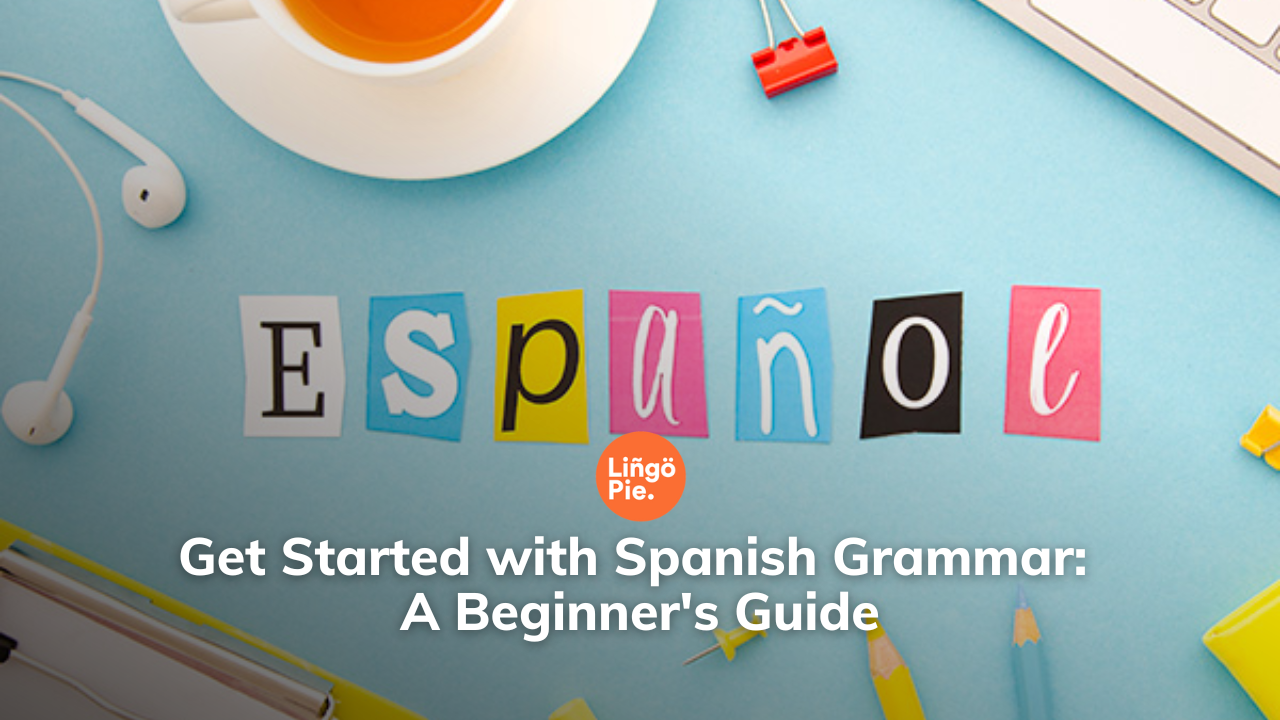If you're interested in learning Spanish, one of the first things you'll need to tackle is grammar. While grammar can seem intimidating at first, it's an essential component of language learning, and having a solid understanding of basic Spanish grammar will help you build a strong foundation for your future studies. In this guide, we'll walk you through the fundamentals of Spanish grammar for beginners, including essential concepts like verb conjugation, noun and adjective agreement, and sentence structure.

Verbs and Verb Conjugation
Verbs are the backbone of any language, and Spanish is no exception. In Spanish, every verb belongs to one of three categories or "conjugations" based on its ending: -ar, -er, or -ir. For example, the verb hablar, meaning "to speak," is an -ar verb, while the verb comer, meaning "to eat," is an -er verb. Finally, the verb vivir, meaning "to live," is an -ir verb.
To use verbs in Spanish, you'll need to conjugate them, which means changing the verb's ending based on the subject of the sentence. For example, the verb hablar in the present tense is conjugated as follows:
yo hablo (I speak)
tú hablas (you speak)
él/ella/usted habla (he/she/you (formal) speak)
nosotros/nosotras hablamos (we speak)
vosotros/vosotras habláis (you all speak - used in Spain)
ellos/ellas/ustedes hablan (they/you all (formal) speak)
As you can see, the verb's ending changes for each subject, except for nosotros/nosotras, which remains the same for -ar and -ir verbs but adds an accent to -er verbs.
Nouns and Adjective Agreement
In Spanish, nouns have gender, which means that they are either masculine or feminine. For example, la mesa (the table) is feminine, while el libro (the book) is masculine. In addition, nouns have a singular and plural form, which changes the ending of the noun.
Adjectives in Spanish must agree in both gender and number with the noun they describe. For example, if you want to describe a masculine noun, such as el perro (the dog), you would use a masculine adjective, such as grande (big), resulting in el perro grande (the big dog). Similarly, if you want to describe a feminine noun, such as la casa (the house), you would use a feminine adjective, such as bonita (pretty), resulting in la casa bonita (the pretty house).
Sentence Structure: Spanish vs English
In Spanish, sentences follow a subject-verb-object order, which means that the subject comes first, followed by the verb, and then the object. For example, the sentence "I eat pizza" would be translated to "Yo como pizza" in Spanish. However, keep in mind that Spanish also allows for more flexibility in sentence structure, so you might encounter variations depending on the context and emphasis.
In addition, Spanish uses articles to indicate the gender and number of nouns. There are two types of articles in Spanish: definite and indefinite. The definite article (the) in Spanish is el (masculine) or la (feminine), while the indefinite article (a/an) is un (masculine) or una (feminine).
Read also: Spanish Language Curse Words: Know When to Use Bad Spanish Words Like a Pro
Practice Makes Perfect
While these concepts may seem overwhelming at first, the best way to get comfortable with them is through practice. One great way to practice is by listening to and reading Spanish in a variety of contexts, such as TV shows, movies, news articles, and books. This will help you get a feel for the language and how grammar is used in context. Additionally, there are many resources available for practicing grammar specifically, such as grammar books, online exercises, and language learning apps.
Another helpful way to practice is by speaking and writing in Spanish as much as possible. Even if you're just starting out, try to incorporate what you've learned into your conversations and writing. This will help you solidify your understanding of grammar and build your confidence in using the language.
Read also: Spanish for Travelers: How to Speak Like a Local
Finally, don't be afraid to make mistakes! Mistakes are a natural part of language learning, and the more you practice, the more comfortable you'll become with the language. Remember that the ultimate goal is to be able to communicate effectively in Spanish, and grammar is just one aspect of that.

How to Learn Spanish:
One of the best ways to level up in your studies is to learn spanish through movies. Movies can provide an immersive experience where you can learn new vocabulary and grammar structures in context. By watching Spanish movies, you'll be exposed to the natural flow of the language, including different accents and expressions. Additionally, watching movies can be a fun and engaging way to learn, which can help you stay motivated and engaged with the language. To get the most out of watching movies for language learning, consider using a tool like Lingopie, which offers movies and TV shows in Spanish with both Spanish and English subtitles. Lingopie's AI-powered tools, such as instant translation and clickable subtitles, make it easy to understand challenging words and phrases and help you learn in a more natural and effective way.
Summing up:
In conclusion, mastering basic Spanish grammar is essential for anyone who wants to learn the language. By understanding key concepts like verb conjugation, noun and adjective agreement, and sentence structure, you'll be well on your way to building a strong foundation for your future studies. With plenty of practice and a willingness to make mistakes, you'll be speaking and writing in Spanish with confidence in no time. Good luck!
If you're looking for the best way to learn spanish on your own, look no further than Lingopie. This innovative language learning platform uses real foreign TV shows and movies, including popular Netflix favorites, to immerse you in the language and help you learn in context. With AI-powered tools like instant translation and clickable subtitles, Lingopie creates personalized lessons for learners of all levels, allowing you to practice your grammar skills in a way that feels natural and authentic. By watching and engaging with the content on Lingopie, you'll not only improve your grammar but also build your confidence in speaking and listening to Spanish. So why wait? Start speaking like a local today and try Lingopie!






![30+ Modern English Slang Terms For Money [Guide]](/blog/content/images/size/w300/2025/06/Slang-term-for-money.jpg)
![5 Official Spanish Language Tests To Show Your Proficiency Level [Guide]](/blog/content/images/size/w300/2025/06/Spanish-Language-Tests.jpg)

![Why Memorizing Spanish Words Won’t Make You Fluent [Tips]](/blog/content/images/size/w300/2025/06/how-to-practice-spanish-vocabulary.jpg)